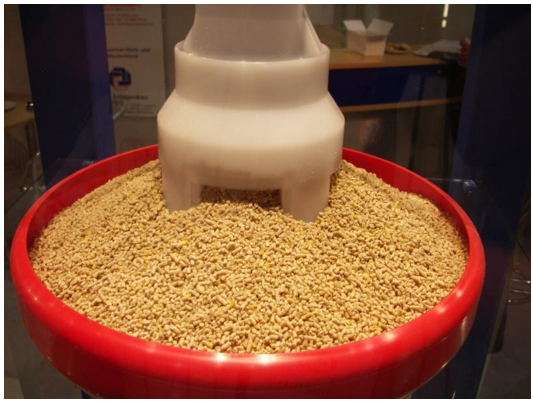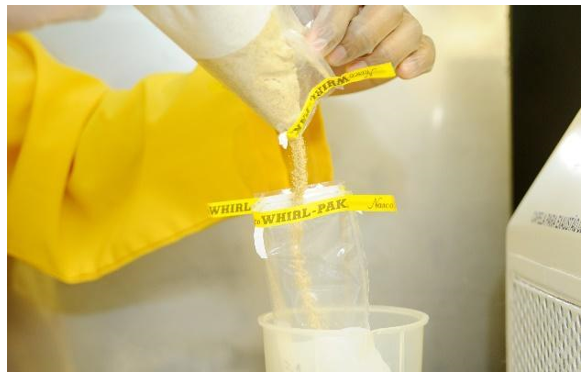



Ingredient selection for broiler feed
Broiler feed accounts for approximately 70% of broiler production, and ingredients are the major contributor. Ingredients play important roles in pellet quality and broiler performance. In general, ingredient selection often uses commercial parameters including price and supply. However, quality parameters are also important. This article aims to provide the general aspects of ingredient selection for commercial broiler feed.Nutrition aspects
Nutrient values are important for nutritionists in terms of ingredient selection. Typically, the focus is on incoming ingredients composition in terms of factors including moisture, crude protein, fat, fiber, and ash. However, we cannot consider only amounts when selecting ingredients. Instead, nutrient bioavailability including metabolizable energy, digestible amino acids, fatty acids, available phosphorus, and other nutrient values should be considered. Many references can be used as the guideline values (Institut National de la Recherche Agronomique [INRA], Brazilian Tables for Poultry and Swine).
The nutrient matrix is very important for feed formulation. The precision and accuracy of the analyses will consequently affect the structure, cost, and chemical composition of the feed. The nutrient matrix of each ingredient can be influenced by season, source, and storage time. For example, the starch content in cassava is lost during storage. The longer the storage time, the more cassava starch and energy will be lost. Therefore, nutrient matrices of each ingredient must be frequently evaluated and separated by sources.
Antinutritional factors are compounds that can interrupt nutrient absorption and metabolism and negatively impact health. Antinutritional factors can be found in a variety of ingredients (Table 1). Their adverse impact can be alleviated by physical, chemical, and/or biological processes. The limited inclusion of ingredients is another option to reduce the risk of antinutritional factors.
Table 1: Major antinutritional factors and their adverse impacts.
|
Antinutritional factors |
Ingredient source |
Adverse effect |
Alleviation method |
|
Protease inhibitor |
Soybean meal |
Amino acids’ availability and pancreas hypertrophy |
Heat |
|
Saponin |
Lupin, sunflower meal, alfalfa |
Decreased feed intake |
Inclusion limitation |
|
Phytic acid |
Plant meal |
Reduced mineral utilization |
Phytase |
|
Glucosinolate |
Rapeseed |
Depressed synthesis of thyroid hormone (T3 and T4) |
Genetic improvement and inclusion limitation |
|
Gossypol |
Cottonseed meal |
Reduced feed intake and bodyweight |
Genetic improvement and inclusion limitation |
|
Haemagglutinin |
Soybean meal, legume seeds |
Inflammation of intestines, kidneys, and thyroid |
Heat |
|
Cyanogen |
Cassava, sorghum |
Poor growth and feed efficiency |
Evaporation and inclusion limitation |
|
Antivitamin |
Soybean meal, corn, linseed meal, cottonseed meal |
Reduced vitamin availability |
Heat and water extraction |

Economic aspects
Supply and demand influence feed costs. The sufficient supply of ingredients must be considered prior to evaluating the cost and nutritional value. Generally, the ingredient supply and price vary depending on the season. In some cases, it is necessary to find a lower-priced alternative to replace a higher-priced ingredient without adverse effects on broiler performance. For example, soybean meal may be partially replaced with other alternative protein sources such as canola and rapeseed.
Enzyme application is widely used in the broiler feed production. It can alleviate the effects of antinutritional factors and reduce feed costs by releasing nutrients from the feed matrices. Enzyme applications have many benefits for broilers. However, some enzymes may not tolerate heat treatment during the production process. Although post-pellet liquid application systems can be used to circumvent heat sensitivity, the enzyme recovery and uniformity in the final feed must be monitored regularly.
Relative value (RV) is the one tool that can determine the nutrient value of ingredients by comparing standard nutrients such as crude protein, digestible amino acids, metabolizable energy, or available phosphorus among ingredient sources. This value does not consider the inclusion level. It can be calculated and expressed in a cost-per-nutrient unit (Table 2).
Table 2: Example of relative value calculation by nutrient sources.
Ingredient | Nutrient content | Price/metric ton | RV ($/nutrient unit) |
Energy source
- Wheat | 3,441 kcal/kg 3,107 kcal/kg | 150 186 | $4.35/100 kcal $5.99/100 kcal |
Protein source
- Rapeseed | 48% CP 35% CP | 585 303 | $12.19/CP $8.65/CP |
Phosphorus source
- DCP | 17% AvP 14% AvP | 360 320 | $21/AvP $22/AvP |

Feed safety and regulatory aspects
Feed safety is an important criterion for ingredient selection. Feed ingredients must be from safe sources. To reduce the risk of broiler feed contamination, feed safety assessments with testing and auditing are prudent. The hazards in feed ingredients are somewhat dependent upon the ingredient sources and processing types. Ingredient hazards can be classified into 3 main groups: chemical, biological, and physical. The major chemical hazards include pesticides, heavy metals, dioxins, melamine, and antibiotic residues. Pesticides are primarily monitored in grain products whereas heavy metals are issues associated with mineral sources. Microbes present biological hazards that can cause broiler health issues and include bacteria, primarily Salmonella, as well as fungi that can produce mycotoxins. The last group, physical hazards, are contaminants such as plastic, glass, or metal. Physical hazards can be detected within process interventions (magnets) and laboratory analyses (Table 3).
Table 3: Examples of hazard risks associated with broiler feed ingredients
Ingredients | Biological | Physical | Chemical |
Corn, sorghum | Mycotoxin | Sand, plastic, wood | Pesticides |
Animal products | Salmonella | Sand | Melamine |
Plant protein | Mycotoxin | Plastic, wood | Pesticides, melamine |
Cassava | Mycotoxin | Sand, wood | Hydrogen cyanide (HCN) |
Phosphate sources, limestone | - | - | Heavy metals, dioxins |
Oils | - | - | Pesticides, dioxins |
Quality assurance (QA) methods and standards must be used for ingredient selection to minimize hazards. The QA process starts from ingredient purchasing by setting standards and conducting ingredient quality checks at reception in feed mills. The inspection of ingredients must be in place to ensure all newly arrived ingredients are safe to use in broiler feed production. The sampling and analysis must be rigid and precise. Sampling should be suitable for the volume and nature of ingredients, and methodology should be appropriate for the ingredients. Additionally, a monitoring program must be efficiently scheduled and suitable.
Feed safety must comply with the regulatory agencies. Therefore, the national and international regulations must be considered as criteria for ingredient selection, particularly export and import requirements. Regulatory criteria include prohibited ingredients, safety levels of ingredients, and contaminants that relate to food safety. Different countries have different restriction levels and regulations. For example, animal protein in broiler feed is prohibited for use in flocks reared for meat that is exported to the European Union.
Feed processing and pellet quality
Ingredients also impact the feed mill performance and pellet quality. The varying content and type of starch in ingredients require different levels of conditioning to achieve gelatinization. Moreover, different inclusions of starch-rich ingredients require specific dyes to extrude an optimal pellet while maintaining optimum production capacity. Other factors that can affect pellet quality and feed processing are fat and fiber content in ingredients. Fat is a necessary nutrient but also acts as a moisture barrier. Consequently, steam cannot be transferred to make the optimal gelatin. Fiber can reduce the capacity of the feed mill process and can cause equipment wear due to the abrasive properties.
Summary
Ingredient selection is an important process for broiler feed production. Considerations should include the cost, quality, and safety of the ingredients. A solid QA program is key to a consistent supply of quality ingredients. Given the importance of feed for high-production performance, it is clear that well-performing flocks require high-quality feed ingredients.








